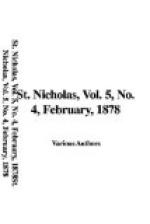Of course I am aware that it is exceedingly impolite to put oneself first, but in the present instance you must excuse it; for besides being the oldest, I occupy the position of guide, philosopher and friend to Charley, and my story would scarcely be intelligible or complete if I did not begin with myself. Well, to begin: I am one of those unfortunate individuals known in China as “cha-szes,” or tea-tasters; doomed for my sins, or the hope of one day getting rich, to pass the time in smelling, tasting and buying teas for the great mercantile house or “hong” of Young Hyson & Co. The place at which you find me is Hankow, on the great Yang Tsze Kiang, or river, some six hundred miles from its mouth. If you have a map of China, and will find on it the Yang Tsze, by tracing with your finger—if your map is at all correct—you will discover the cities of Chin Kiang, Nanking, Nganking, Kiu Kiang, and finally, at the junction of the river Han with the Yang Tsze, Wuchang. Hankow will probably not be on your map, but on the north bank of the Yang Tsze, just at the point of junction with the Han, is this important trading port, thrown open to foreigners in 1861, after the signing of the treaty of Tein-Tsin.
And now for Charley, whom I have kept talking pigeon-English to Akong all this time. Charley was the son of an old friend, chaplain to the British consulate at one of the coast ports; his mother dying, Charley was to have been sent home to relatives in England, but I had prevailed upon his father to let the boy, now between twelve and fourteen years old, make me a visit before his final departure.
And now for the conspiracy:
“Chin-chin (how do you do), Akong?” said I.
“What is it, Charley? Out with it, my boy; some mischief, I know.” Akong gave a chuckle and a muttered “hi-yah,” and Charley proceeded to explain.
“Well Cha,”—the Chinamen called me Cha-tsze and the boy had abbreviated it to Cha,—“Akong says that he has a boat going up to the tea country to-morrow or next day, and wants me to go with him; may I?”
[Illustration: The barber.]
Charley knew that I could refuse him nothing, but the trip of several hundred miles into a district rarely, if ever, visited by foreigners, involved more of a risk than I cared to assume. Charley seeing that I looked unusually solemn, turned to Akong for support.
“What for you no go too, Cha-tsze? Just now my thinkee no got new chop come inside two week; get back plenty time.”
Akong’s pigeon-English perhaps requires explanation: You must know, then, that the Chinese with whom all foreigners transact business, instead of learning correct English have a lingo, or patois, of their own, ascribed, but I think erroneously, to the carelessness of their first English visitors, who addressed them in this manner, thinking to make themselves more easily understood. The fact is, that pigeon-English,




